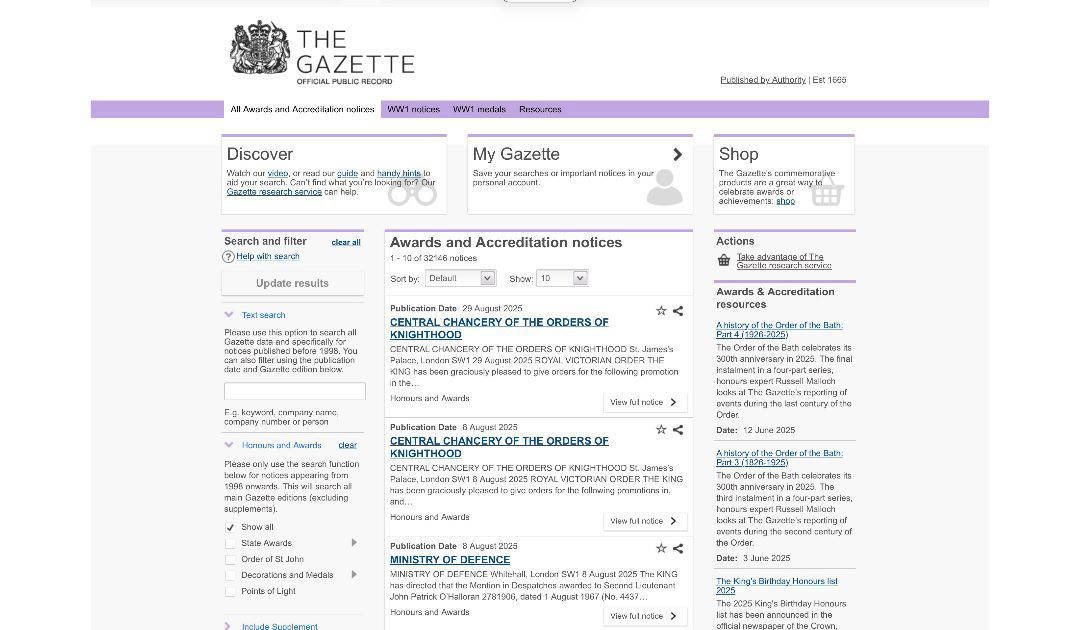The London Gazette is one of the oldest surviving English newspapers and an official journal of record for the United Kingdom. Established during the 17th century, it holds a unique position in British history and governance, being instrumental in the dissemination of official information, legislation, and public notices for over 350 years.
The origins of the London Gazette trace back to 1665, in the aftermath of the Great Plague that swept through London. At the time, the city was in crisis, and Charles II had relocated the royal court to Oxford to avoid infection. News and communication were critical, but the government required a controlled and reliable means to share official updates without the risk of widespread panic or the unreliability of urban gossip. In this context, the first edition of what would become the London Gazette was published on the 7th of November 1665 under the title The Oxford Gazette. This name reflected its temporary printing location while the court was in Oxford. After the immediate plague threat subsided and the court returned to the capital, the newspaper’s name changed to The London Gazette in February 1666.
It is important to understand that the London Gazette was never intended to be a typical newspaper reporting on daily events or opinions. Instead, it has always been a government-issued publication with the purpose of recording official notices. Over time, its role evolved to cover a wide array of legal and administrative functions. Today, it is one of the three official journals of record in the UK, alongside the Edinburgh Gazette and the Belfast Gazette, which serve Scotland and Northern Ireland respectively.
The London Gazette publishes a wide range of notices that are legally required to be made public. These include government announcements, military promotions, honours and awards, and, importantly, notices of insolvency or bankruptcy. For businesses and the legal profession, it serves as an essential source for information on company liquidations, receiverships, and other financial matters. The Gazette also records changes affecting the Crown, such as royal proclamations and the conferring of peerages and honours, including the New Year and Birthday Honours lists.
One of the remarkable aspects of the London Gazette is its continuity and authority. Even though it has gone through centuries of political upheaval, wars, and technological changes, it has remained a trusted source of official record. Its legal significance is such that publication in the Gazette is often considered the formal act of notification, regardless of whether or not the general public takes notice. For example, in cases of bankruptcy, the announcement in the Gazette is a statutory requirement that ensures legal transparency.
The layout and style of the London Gazette have traditionally been very formal and straightforward. Unlike conventional newspapers, it does not feature journalistic articles, photographs, or commentary. Instead, it presents short entries, notices, and announcements with precise wording to ensure legal clarity and accuracy. This format reflects its role as a document of record rather than a medium of entertainment or public debate.
Over the years, the Gazette has adapted to modern technology while maintaining its historic gravitas. Once only available as a printed publication, it is now accessible online, and its archives are fully digitised, allowing researchers and the public to explore records stretching back to the 17th century. These archives provide a fascinating insight into British history, documenting everything from the appointments of military officers during the Napoleonic Wars to the honours lists of modern monarchs.
Another interesting feature of the London Gazette is its association with military history. During times of war, the Gazette has published official despatches from the front, including reports from the First and Second World Wars. Soldiers and officers mentioned in despatches for their bravery or service were formally recognised in its pages, giving the publication a lasting link with acts of heroism and national service.

